

Xeriscape Installation /
Xeriscaping
Because of our climate in New Mexico, xeriscaping is a popular way to maintain landscaping beauty, conserve water, and save money. Xeriscaping is an approach to water conservation that is only limited by your imagination and it can also include small patches of live grass or artificial turf. Think about what you want in your landscaping and how to adapt that to our desert environment. You can select drought tolerant plants that have beautiful color and form. You can also utilize rocks to create designs and dry riverbeds, dry bed arroyos, and stucco for sculptured walls that blend into your landscaping. Many xeriscape designs include one or more transition zones between areas that have higher levels of watering and those with lower watering or no watering -- this is a concept called “hydrozoning.” Use of irrigation and runnoff water should also be considered. Benefits of xeriscaping include: • Saving water • Saving money • Lower maintenance • Potential rebates when replacing high-usage watering areas • Opportunity to carry the design of other landscaping throughout your yard Explore and consider different xeriscaping techniques. For instance, rock gardens may be a great approach to create form with color added through low-water need flowering plants. Areas that are often occupied and are nearby gathering spaces might even have efficient water features to create waterfall sounds and attract wildlife.Xeriscaping Irrigation
Xeriscaping does not mean “no-water” or “no-irrigation.” Some areas, even those with certain plants, may need no regular irrigation. Drip irrigation systems should be used to conserve water and deliver it to only the plants you want watered. This saves water and also tends to suppress weeds that might be watered from a traditional spraying sprinkler system. Areas with regular lawn may be watered with traditional spraying sprinklers. We suggest separate irrigation zone valves in design of your xeriscaping. Even low- water or no-water zones with plants may need irrigation to use with new planting or times of severe drought. These zones can usually be turned off most or all the time, but are available in case you need them. Three zones are most common and can be described as: • Oasis o This area contains plants needing more water, typically a small area or set of areas, often near buildings or in an island of the landscape. • Transition o This area contains moderate watering and low watering need plants and is usually a buffer zone between Oasis and Arid. • Arid o This is where plants usually requiring no watering are located. Often times this zone is furthest away from buildings or occupied areas of the landscape. Many parts of the Arid zone may have no plants at all. Another important approach to xeriscape irrigation is design of your run-off water. Channeling run-off water to areas with plants that require water will allow you to reduce your irrigation schedule. In some landscaping designs, you may wish to store run-off water for your use in manual care and watering of your plants. Don’t forget how your landscaping will appear throughout the year. Consider use of evergreens in key locations that will retain foliage and color in the winter months.Low-water use plants and trees in Xeriscaping
Xeriscape Plant List
Fortunately we live in New Mexico, an area where plants with low-water are available in nurseries. Many of these have beautiful colors and fragrances with long blooming seasons. These plants can be located in the irrigation zones targeted for low or no water usage. A common and currently popular tree used in Albuquerque xeriscaping is the Desert Willow. It has colorful blooms and often requires no irrigation in a normal season. Many other trees and plants exist. Check your local nurseries or call Rising Sun Landscaping & Maintenance. A partial list of low-water to medium-water plants you should consider are in the following list. Consider these and others found at your local nurseries. • Trees o Afghan Pine (Pinus Eldarica) o Austrian Pine, (Pinus Nigra) o Chinese Pistache (Pistachia Chinensis) o Desert Willow (Chilopsis Linearis) o New Mexico Olive (Forestiera Neomexicana) o Oak (Quercus) o Pinon Pine (Pinus Edulis) o Velvet Mesquite (Prosopis Velutina) • Shrubs o Apache Plume (Fallugia Paradoxa) o Big Sage (Artemisa Tridentata) o Blue Mist Spirea (Caryoperis Clandonensis) o Cliffrose (Cowania Mexicana) o Curlleaf Mountain Mahogany (Cercocarpus Lenifolius) o Fernbush (Chamaebatiaria Millefolium) o Grayleaf Cotoneaster (Cotoneaster Buxifolius) o Spanish Broom (Spartium Junceum) o Three Leaf Sumac (Rhus Trilobata) o Viltex, Chaste Tree (Vitex Agnus-Castus) • Flowering Plants o ARP, Upright Rosemary (Rosmarinus Officinalis “ARP”) o Autum Joy Sedum (Sedum Telephium) o Autum Sage (Salvia Greggii) o Beach Wormwood (Aremisia Stelleriana) o Blue Flax (linum Perenne) o Catmint (Nepeta Mussini Syn Fassenii) o Chocolate Flower (Berlandiera Lyrata) o English Lavander (Lavandula Angustifolia) o Hardy African Daisy (Osteospermum Baberiae) o Lamb’s Ear (Stachys Byzantina) o Licorice Mint Hyssop (Agastache Rupestris) o Garden Sage (Salvia Offinalis) o Gaura (Gaura Lindheimeri) o Giant Hyssop (Agastache Cana) o Goldenrod (Solidago Canadensis) o Gray Santolina (Santolina Chamaecyparissus) o Hummingbird Plant (Zauschneria Californica) o Indian Blanketflower (Gallardia Grandiflora) o Mat Daisy (Anacyclus Depressus) o Moonshine Yarrow (Achillea Taygetea) o Maxamillian Sunflower (Helianthus Maximilliana) o Mexican Evening Primrose (Oenothera Berlandieri) o Mexican Hat, Prarie Coneflower (Ratibida Columnifera) o Partidge Fether (Tanacetum Densum-Amani) o Perky Sue (Hymenoxys Scaposa) o Pineleaf Penstemon (Penstemon Pinfolius) o Poppy Mallow, WInecups (Callirhoe Involucrata) o Purple Coneflower (Echinacea Purpurea) o Red Hot Poker (Kniphofia Uvaria) o Red Valerian (Centranthus Ruber) o Rocky Mountain Penstemon (Penstemon Strictus) o Russian Sage (Perovskia Atriplicifolia) o Scarlet Globemallow (Sphaeralcea Incana) o Soapwort (Saponaria Oxymonides) o Southernwood (Artemisia Arbotanum) o Sundrops (Calylophus Species) o Sunset Penstemon (Penstemon Clutei) o Threadleaf Coreopsis (Coreopsis Verticillata) o Thrift (Armeria Maritima) • Desert Plants o Century Plant (Agave Parryi) o Claret Cup Hedgehog (Echinocereus Triglochidiatus) o Clustering Pin Cushions (Coryphantha Vivipara) o Clustering Snowball (Escobaria Orcuttii) o Concrete Leaf Living Stone (Titanopsis Calcarea) o Green-flowered Hedgehog (Echinocereus Viridiflorus) o Hardy Living Stone (Aloinopsis Spathulata) o Jacob’s Ladder, Ocotillo (Fouquieria Splendens) o Oklahoma Hedgehog (Echinocereus Reichenbachii) o Sotol (Dasylirion Weeleri) o Spiny Hedgehog (Echinocereus Coccineus) o Texas Red Yucca (Hesperaloe Parviflora) o Training Iceplant (Ruschia Hamata) • Ground Cover - Grass o Blue Grama Grass (Bouteloua Gracilis) o Buffalograss (Buchloe Dactyloides) o Turff Tall Fescue (Festuca Elatior) - High water use • Ornimental Grasses o Deer Grass (Muhlenbergia Rigens) o Galleta (Hilaria Jamesii) o Golden bamboo (Phyllostachys Aurea) o Hardy Fountain Grass (Pennisetum Aloepecuroides) o Indian Ricegrass (Oryzopsis Hymenoides) o Maiden Grass (Miscanthus) o Mondo Grass (Ophiopogon Japonicas) o Pampas Grass (Cortaderia Selloana ) o Ravenna Grass (Erianthus Ravennae) o Sand Lovegrass (Eragrostis Tricodes) o Sideoats Grama (Bouteloua Curtipendula) o Western Wheatgrass (Agropyron Smithii)
Rio Rancho • Albuquerque • West Mesa • Corrales • Taylor Ranch • East Mountains • Bernallilo • Algodones • Placitas • Cedar Crest • Tijeras • Los Lunas • Belen • Santa Fe
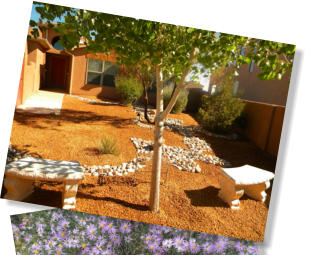



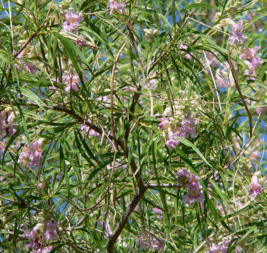


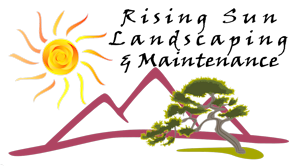
Available everyday 7 am to 8 pm
How can we help you?


- Landscaping Overvew
- Patios, Decks, Gathering Spaces
- Paver Driveways & Sidewalks
- Concrete Driveway Walkway
- Block Walls, Retaining Walls
- Shade, Pergolas, Gazebos
- Water, Ponds, Fountains
- Kitchens, Kivas, Fireplaces, Pits
- Sod, Grass, Lawn Installation
- Synthetic Lawn, Artifical Grass
- Putting Greens
- Irrigation, Sprinklers
- Mailbox address marker planters
- Xeriscape, Xeriscaping

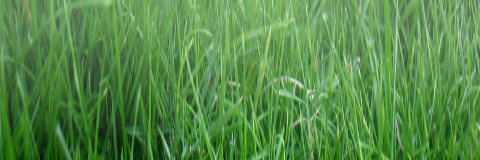
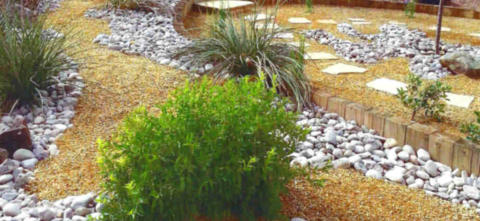
Xeriscape Installation /
Xeriscaping
Because of our climate in New Mexico, xeriscaping is a popular way to maintain landscaping beauty, conserve water, and save money. Xeriscaping is an approach to water conservation that is only limited by your imagination and it can also include small patches of live grass or artificial turf. Think about what you want in your landscaping and how to adapt that to our desert environment. You can select drought tolerant plants that have beautiful color and form. You can also utilize rocks to create designs and dry riverbeds, dry bed arroyos, and stucco for sculptured walls that blend into your landscaping. Many xeriscape designs include one or more transition zones between areas that have higher levels of watering and those with lower watering or no watering -- this is a concept called “hydrozoning.” Use of irrigation and runnoff water should also be considered. Benefits of xeriscaping include: • Saving water • Saving money • Lower maintenance • Potential rebates when replacing high-usage watering areas • Opportunity to carry the design of other landscaping throughout your yard Explore and consider different xeriscaping techniques. For instance, rock gardens may be a great approach to create form with color added through low-water need flowering plants. Areas that are often occupied and are nearby gathering spaces might even have efficient water features to create waterfall sounds and attract wildlife.Xeriscaping
Irrigation
Xeriscaping does not mean “no-water” or “no-irrigation.” Some areas, even those with certain plants, may need no regular irrigation. Drip irrigation systems should be used to conserve water and deliver it to only the plants you want watered. This saves water and also tends to suppress weeds that might be watered from a traditional spraying sprinkler system. Areas with regular lawn may be watered with traditional spraying sprinklers. We suggest separate irrigation zone valves in design of your xeriscaping. Even low-water or no-water zones with plants may need irrigation to use with new planting or times of severe drought. These zones can usually be turned off most or all the time, but are available in case you need them. Three zones are most common and can be described as: • Oasis o This area contains plants needing more water, typically a small area or set of areas, often near buildings or in an island of the landscape. • Transition o This area contains moderate watering and low watering need plants and is usually a buffer zone between Oasis and Arid. • Arid o This is where plants usually requiring no watering are located. Often times this zone is furthest away from buildings or occupied areas of the landscape. Many parts of the Arid zone may have no plants at all. Another important approach to xeriscape irrigation is design of your run-off water. Channeling run-off water to areas with plants that require water will allow you to reduce your irrigation schedule. In some landscaping designs, you may wish to store run-off water for your use in manual care and watering of your plants. Don’t forget how your landscaping will appear throughout the year. Consider use of evergreens in key locations that will retain foliage and color in the winter months.Low-water use plants and trees in
Xeriscaping
Xeriscape Plant List
Fortunately we live in New Mexico, an area where plants with low- water are available in nurseries. Many of these have beautiful colors and fragrances with long blooming seasons. These plants can be located in the irrigation zones targeted for low or no water usage. A common and currently popular tree used in Albuquerque xeriscaping is the Desert Willow. It has colorful blooms and often requires no irrigation in a normal season. Many other trees and plants exist. Check your local nurseries or call Rising Sun Landscaping & Maintenance. A partial list of low-water to medium- water plants you should consider are in the following list. Consider these and others found at your local nurseries. • Trees o Afghan Pine (Pinus Eldarica) o Austrian Pine, (Pinus Nigra) o Chinese Pistache (Pistachia Chinensis) o Desert Willow (Chilopsis Linearis) o New Mexico Olive (Forestiera Neomexicana) o Oak (Quercus) o Pinon Pine (Pinus Edulis) o Velvet Mesquite (Prosopis Velutina) • Shrubs o Apache Plume (Fallugia Paradoxa) o Big Sage (Artemisa Tridentata) o Blue Mist Spirea (Caryoperis Clandonensis) o Cliffrose (Cowania Mexicana) o Curlleaf Mountain Mahogany (Cercocarpus Lenifolius) o Fernbush (Chamaebatiaria Millefolium) o Grayleaf Cotoneaster (Cotoneaster Buxifolius) o Spanish Broom (Spartium Junceum) o Three Leaf Sumac (Rhus Trilobata) o Viltex, Chaste Tree (Vitex Agnus-Castus) • Flowering Plants o ARP, Upright Rosemary (Rosmarinus Officinalis “ARP”) o Autum Joy Sedum (Sedum Telephium) o Autum Sage (Salvia Greggii) o Beach Wormwood (Aremisia Stelleriana) o Blue Flax (linum Perenne) o Catmint (Nepeta Mussini Syn Fassenii) o Chocolate Flower (Berlandiera Lyrata) o English Lavander (Lavandula Angustifolia) o Hardy African Daisy (Osteospermum Baberiae) o Lamb’s Ear (Stachys Byzantina) o Licorice Mint Hyssop (Agastache Rupestris) o Garden Sage (Salvia Offinalis) o Gaura (Gaura Lindheimeri) o Giant Hyssop (Agastache Cana) o Goldenrod (Solidago Canadensis) o Gray Santolina (Santolina Chamaecyparissus) o Hummingbird Plant (Zauschneria Californica) o Indian Blanketflower (Gallardia Grandiflora) o Mat Daisy (Anacyclus Depressus) o Moonshine Yarrow (Achillea Taygetea) o Maxamillian Sunflower (Helianthus Maximilliana) o Mexican Evening Primrose (Oenothera Berlandieri) o Mexican Hat, Prarie Coneflower (Ratibida Columnifera) o Partidge Fether (Tanacetum Densum-Amani) o Perky Sue (Hymenoxys Scaposa) o Pineleaf Penstemon (Penstemon Pinfolius) o Poppy Mallow, WInecups (Callirhoe Involucrata) o Purple Coneflower (Echinacea Purpurea) o Red Hot Poker (Kniphofia Uvaria) o Red Valerian (Centranthus Ruber) o Rocky Mountain Penstemon (Penstemon Strictus) o Russian Sage (Perovskia Atriplicifolia) o Scarlet Globemallow (Sphaeralcea Incana) o Soapwort (Saponaria Oxymonides) o Southernwood (Artemisia Arbotanum) o Sundrops (Calylophus Species) o Sunset Penstemon (Penstemon Clutei) o Threadleaf Coreopsis (Coreopsis Verticillata) o Thrift (Armeria Maritima) • Desert Plants o Century Plant (Agave Parryi) o Claret Cup Hedgehog (Echinocereus Triglochidiatus) o Clustering Pin Cushions (Coryphantha Vivipara) o Clustering Snowball (Escobaria Orcuttii) o Concrete Leaf Living Stone (Titanopsis Calcarea) o Green-flowered Hedgehog (Echinocereus Viridiflorus) o Hardy Living Stone (Aloinopsis Spathulata) o Jacob’s Ladder, Ocotillo (Fouquieria Splendens) o Oklahoma Hedgehog (Echinocereus Reichenbachii) o Sotol (Dasylirion Weeleri) o Spiny Hedgehog (Echinocereus Coccineus) o Texas Red Yucca (Hesperaloe Parviflora) o Training Iceplant (Ruschia Hamata) • Ground Cover - Grass o Blue Grama Grass (Bouteloua Gracilis) o Buffalograss (Buchloe Dactyloides) o Turff Tall Fescue (Festuca Elatior) - High water use • Ornimental Grasses o Deer Grass (Muhlenbergia Rigens) o Galleta (Hilaria Jamesii) o Golden bamboo (Phyllostachys Aurea) o Hardy Fountain Grass (Pennisetum Aloepecuroides) o Indian Ricegrass (Oryzopsis Hymenoides) o Maiden Grass (Miscanthus) o Mondo Grass (Ophiopogon Japonicas) o Pampas Grass (Cortaderia Selloana ) o Ravenna Grass (Erianthus Ravennae) o Sand Lovegrass (Eragrostis Tricodes) o Sideoats Grama (Bouteloua Curtipendula) o Western Wheatgrass (Agropyron Smithii)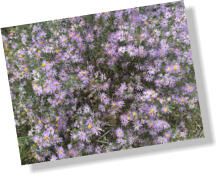

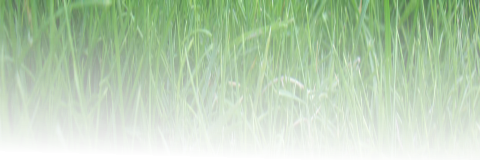

Rio Rancho • Albuquerque • West Mesa • Corrales • Taylor Ranch • East Mountains
Bernallilo • Algodones • Placitas • Cedar Crest • Tijeras • Los Lunas • Belen • Santa Fe
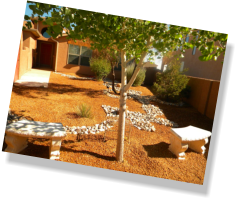
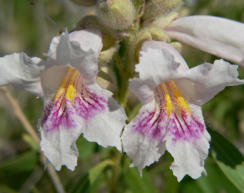
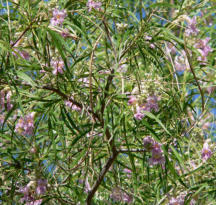
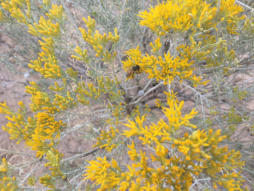
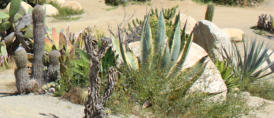



- Home
- Landscaping
- Landscaping Overiew
- Concrete Driveway Walkway
- Block Walls, Retaining Walls
- Shade, Pergolas, Gazebos
- Water, Ponds, Fountains
- Kitchens, Kivas, Fireplaces, Pits
- Sod, Grass, Lawn Installation
- Synthetic Lawn, Artificial Turf
- Putting Greens
- Patios, Decks, Gathering Spaces
- Irrigation, Sprinklers
- Mailbox address marker planters
- Xeriscape, Xeriscaping
- Paver Driveways & Sidewalks
- Commercial Landscaping
- Maintenance
- Landscape Gallery
- About
- Blog





























